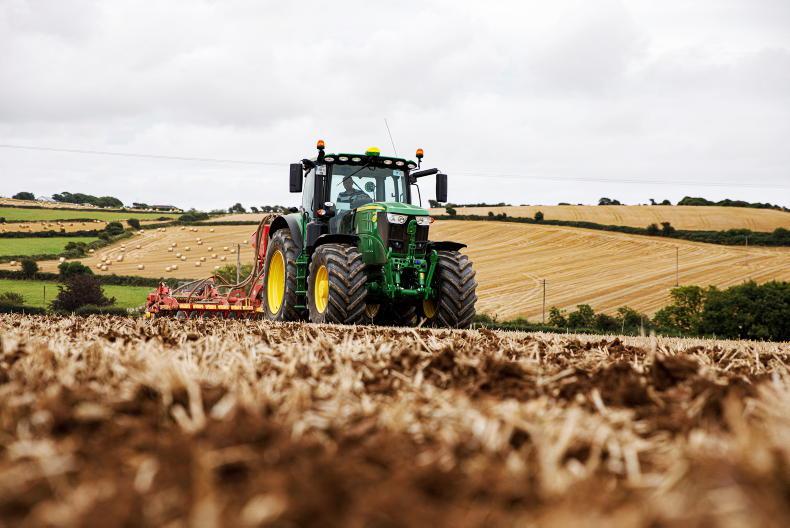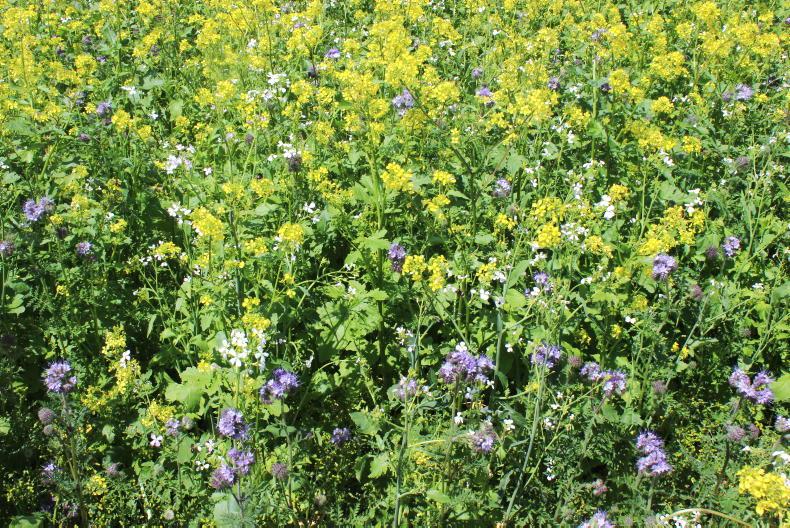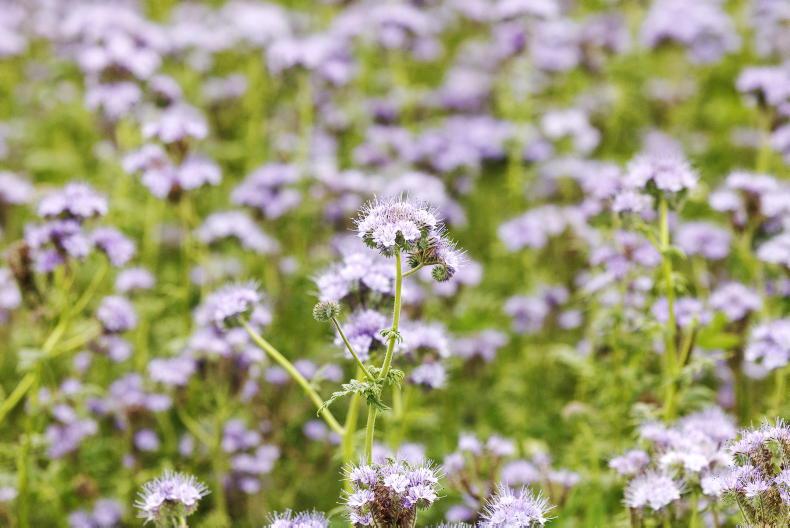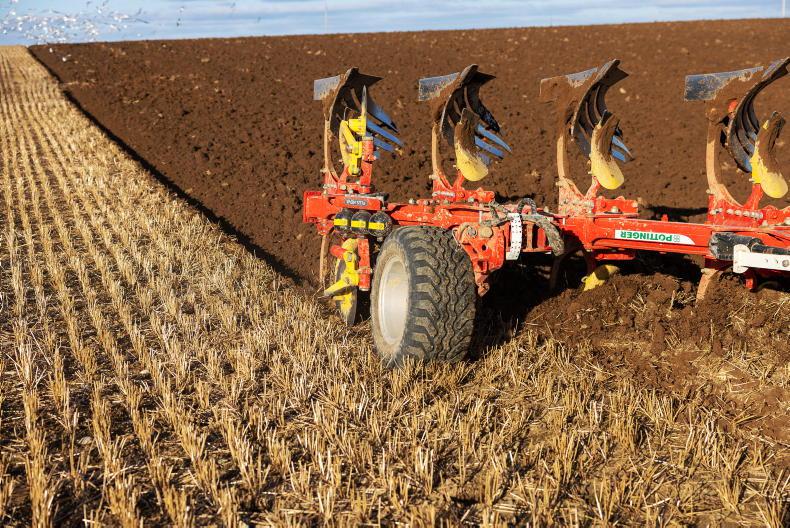Cover crops or catch crops are not a new concept, but in recent years they have created plenty of conversation, and rightly so.
They have numerous advantages and can help to improve many different facets of soil health.
You can make cover crops as simple or as complicated as you like.
If you’re trying them out for the first time, start simple. If you’re becoming more adventurous, keep costs in mind.
Why sow a cover crop?
Cover crops take up nutrients which are left in the soil. The crop can then be incorporated back into the soil and the nutrients used by the next cash crop.
This not only saves money on fertiliser, as usage can be reduced slightly, but it prevents these nutrients from entering watercourses.
These crops also protect the soil from weather over winter and, as they grow, can help to tackle issues in the soil. For example, plants with large tap roots can help where soil is compacted. Plants with small roots will help to improve soil structure.
Incorporating the plants back into the soil will also return plant material to the ground, which can help to increase soil organic matter levels over time.

Tillage radish, mustard and phacelia.
The cover will provide a home for wildlife and insects, providing food and shelter over winter time.
There is obviously cost involved in planting these crops and the return is hard to quantify. Improvements in soil health or structure can’t be directly attributed to cover crops, but those who plant will know the benefits.
The quantity of nutrients taken up by these crops varies from year to year and sowing and growing conditions affect the size of the crop produced, which is returned to the soil, but there are many benefits and planting is a positive step to take to protect the soil, the farm’s most important resource.
Early sowing
Early sowing of these crops is essential. We are now in late July, so sowing as soon as possible is important. Where straw has been chopped, it will be possible to get into fields faster.
Delayed sowing results in delayed establishment and a smaller crop.
A week’s growth in August is worth a month’s growth in September.
Catch crops can be as simple as you make them. Broadcasting oats might be a place to start if you haven’t planted before.
Other simple ways to start are fast-establishing plants such as forage rape and tillage radish.
Remember, if you are trying to tackle a problem such as compaction, consider crops that may help with the issue – crops with big tap roots like stubble turnips.
Some farmers will plant multi-way mixes in their catch crop. This is great for diversity as all plants tackle different jobs, but it is not essential. Keeping a crop in the ground, whether it is one crop or a 15-way mix of plants, is the main thing.
If seed is being broadcast or conditions are not ideal, it is advisable to increase the seeding rate.
Nitrogen-fixing plants
Vetch, clover (crimson or berseem), beans and peas are all good catch crop options that fix nitrogen. Their root systems will also help soil structure.

Berseem clover is a cover crop option.
Soil conditioning
Crops like phacelia and buckwheat have fine roots and are sometimes referred to as being good at conditioning the soil.

Phacelia.
Some reports suggest that buckwheat is good at taking up phosphorus (P) and may be useful where P is locked up in the soil. These crops may also be killed by the frost and this will help to reduce bulk come incorporation time.
Brassica crops
Brassica crops are perhaps the most commonly known cover crops. They’re quick to establish and fast-growing.
They can grow a lot of bulk quickly, but should really be avoided where the rotation contains oilseed rape.

Soil breaking apart and falling away from roots easily in a crop of stubble turnips and tillage radish.
Cereals
Oats and black oats are the most common cereal crops used as cover crops or in mixes.
Oats are simple and effective. While they may not provide as much ground cover they will take up some nitrogen, seed is readily available and they are a good option when broadcasting the seed.
Seed source
All farmers should keep a good track of where seed is coming from. Certification and labelling needs to be checked. The last thing you want to do is import a weed problem.
There are plenty of options available when planting. Direct-drilling stays with the ethos of improving soil health as it minimises cultivation to plant a crop, which is there to protect and improve soil health.
A run of a disc or cultivator, followed by a small broadcast seeder or one-pass, is also an option. The TAMS grant provides grants for broadcast sowers mounted on to cultivation equipment.
Good seed-to-soil contact is essential, so where ground is loose you will most likely need to run the roller over the seedbed, provided conditions are dry. It is important to use what’s available to you on the farm, keeping costs low while giving the crop a good start. Tilling 1cm to 2cm of ground, broadcasting seed with the fertiliser spreader and rolling the crop is another option.
Costs vary hugely depending on seeding rates, the number of species in a mix, the numbers of plants in the mix and the sowing method used. Guide costs from Teagasc put seed at €30/ha. Looking at machinery work, drilling and rolling can come to approoximately €105/ha. There could be additionial fertilisers costs for crops grown for use as fodder. Where required, desiccation cost is estimated at €20/ha.
Advice for farmers planting under GLAS
Farmers planting under GLAS need to sow a mix of at least two crops and adhere to seeding rate guidelines (see Table 1).
Common mixes available under the scheme include phacelia and mustard, forage rape and leafy turnip, vetch and phacelia and tillage radish, forage rape and phacelia.

The mixed leaves of Interval (rape x kale hybrid) and stubble turnips. Rape x kale hybrids are generally used in a grazing situation.
These crops must be planted by 15 September and cannot be grazed until 1 December.
Grazing
If you are going to graze the crops or lease the crops to other farmers, make sure that fencing is up to standard and moved regularly, that the stock are light and taken off when soil conditions are too wet and are causing poaching.
Advantages
Take up soil nutrients for reuse.Prevent leaching or nutrient run-off.Contribute to soil organic matter/carbon buildup.Improve soil structure.Repair soil compaction.Protect soil from erosion.Can be used as animal feed.Bringing animals into the system can help soil health.Can be planted earlier where straw was chopped.Disadvantages
Cost money to plant.Can be difficult to sow at the optimum time.Sowing clashes with harvest and work with straw.
Cover crops or catch crops are not a new concept, but in recent years they have created plenty of conversation, and rightly so.
They have numerous advantages and can help to improve many different facets of soil health.
You can make cover crops as simple or as complicated as you like.
If you’re trying them out for the first time, start simple. If you’re becoming more adventurous, keep costs in mind.
Why sow a cover crop?
Cover crops take up nutrients which are left in the soil. The crop can then be incorporated back into the soil and the nutrients used by the next cash crop.
This not only saves money on fertiliser, as usage can be reduced slightly, but it prevents these nutrients from entering watercourses.
These crops also protect the soil from weather over winter and, as they grow, can help to tackle issues in the soil. For example, plants with large tap roots can help where soil is compacted. Plants with small roots will help to improve soil structure.
Incorporating the plants back into the soil will also return plant material to the ground, which can help to increase soil organic matter levels over time.

Tillage radish, mustard and phacelia.
The cover will provide a home for wildlife and insects, providing food and shelter over winter time.
There is obviously cost involved in planting these crops and the return is hard to quantify. Improvements in soil health or structure can’t be directly attributed to cover crops, but those who plant will know the benefits.
The quantity of nutrients taken up by these crops varies from year to year and sowing and growing conditions affect the size of the crop produced, which is returned to the soil, but there are many benefits and planting is a positive step to take to protect the soil, the farm’s most important resource.
Early sowing
Early sowing of these crops is essential. We are now in late July, so sowing as soon as possible is important. Where straw has been chopped, it will be possible to get into fields faster.
Delayed sowing results in delayed establishment and a smaller crop.
A week’s growth in August is worth a month’s growth in September.
Catch crops can be as simple as you make them. Broadcasting oats might be a place to start if you haven’t planted before.
Other simple ways to start are fast-establishing plants such as forage rape and tillage radish.
Remember, if you are trying to tackle a problem such as compaction, consider crops that may help with the issue – crops with big tap roots like stubble turnips.
Some farmers will plant multi-way mixes in their catch crop. This is great for diversity as all plants tackle different jobs, but it is not essential. Keeping a crop in the ground, whether it is one crop or a 15-way mix of plants, is the main thing.
If seed is being broadcast or conditions are not ideal, it is advisable to increase the seeding rate.
Nitrogen-fixing plants
Vetch, clover (crimson or berseem), beans and peas are all good catch crop options that fix nitrogen. Their root systems will also help soil structure.

Berseem clover is a cover crop option.
Soil conditioning
Crops like phacelia and buckwheat have fine roots and are sometimes referred to as being good at conditioning the soil.

Phacelia.
Some reports suggest that buckwheat is good at taking up phosphorus (P) and may be useful where P is locked up in the soil. These crops may also be killed by the frost and this will help to reduce bulk come incorporation time.
Brassica crops
Brassica crops are perhaps the most commonly known cover crops. They’re quick to establish and fast-growing.
They can grow a lot of bulk quickly, but should really be avoided where the rotation contains oilseed rape.

Soil breaking apart and falling away from roots easily in a crop of stubble turnips and tillage radish.
Cereals
Oats and black oats are the most common cereal crops used as cover crops or in mixes.
Oats are simple and effective. While they may not provide as much ground cover they will take up some nitrogen, seed is readily available and they are a good option when broadcasting the seed.
Seed source
All farmers should keep a good track of where seed is coming from. Certification and labelling needs to be checked. The last thing you want to do is import a weed problem.
There are plenty of options available when planting. Direct-drilling stays with the ethos of improving soil health as it minimises cultivation to plant a crop, which is there to protect and improve soil health.
A run of a disc or cultivator, followed by a small broadcast seeder or one-pass, is also an option. The TAMS grant provides grants for broadcast sowers mounted on to cultivation equipment.
Good seed-to-soil contact is essential, so where ground is loose you will most likely need to run the roller over the seedbed, provided conditions are dry. It is important to use what’s available to you on the farm, keeping costs low while giving the crop a good start. Tilling 1cm to 2cm of ground, broadcasting seed with the fertiliser spreader and rolling the crop is another option.
Costs vary hugely depending on seeding rates, the number of species in a mix, the numbers of plants in the mix and the sowing method used. Guide costs from Teagasc put seed at €30/ha. Looking at machinery work, drilling and rolling can come to approoximately €105/ha. There could be additionial fertilisers costs for crops grown for use as fodder. Where required, desiccation cost is estimated at €20/ha.
Advice for farmers planting under GLAS
Farmers planting under GLAS need to sow a mix of at least two crops and adhere to seeding rate guidelines (see Table 1).
Common mixes available under the scheme include phacelia and mustard, forage rape and leafy turnip, vetch and phacelia and tillage radish, forage rape and phacelia.

The mixed leaves of Interval (rape x kale hybrid) and stubble turnips. Rape x kale hybrids are generally used in a grazing situation.
These crops must be planted by 15 September and cannot be grazed until 1 December.
Grazing
If you are going to graze the crops or lease the crops to other farmers, make sure that fencing is up to standard and moved regularly, that the stock are light and taken off when soil conditions are too wet and are causing poaching.
Advantages
Take up soil nutrients for reuse.Prevent leaching or nutrient run-off.Contribute to soil organic matter/carbon buildup.Improve soil structure.Repair soil compaction.Protect soil from erosion.Can be used as animal feed.Bringing animals into the system can help soil health.Can be planted earlier where straw was chopped.Disadvantages
Cost money to plant.Can be difficult to sow at the optimum time.Sowing clashes with harvest and work with straw. 














SHARING OPTIONS